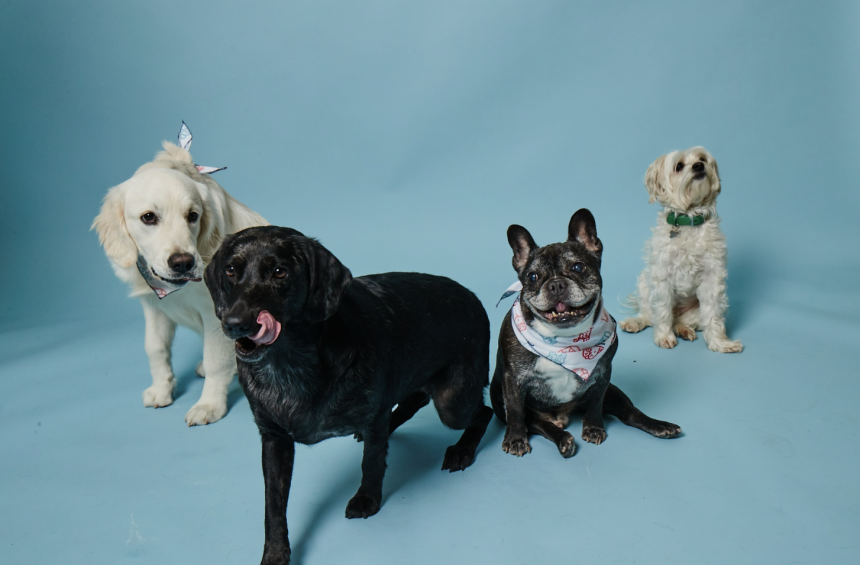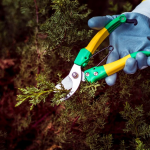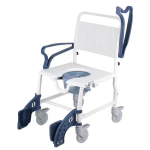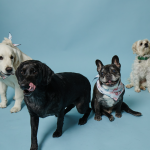Obesity in dogs is more than a cosmetic concern, it’s a serious health issue that can lead to diabetes, arthritis, heart disease, and a shorter lifespan. According to a 2022 report by the Association for Pet Obesity Prevention, over 55% of dogs in the United States are classified as overweight or obese. This alarming statistic highlights the importance of proactive weight management in our canine companions.
If you’re a pet parent worried about your dog’s weight, don’t worry, we’ve created a comprehensive, easy-to-follow checklist for effective dog weight loss. This guide covers everything you need to help your pup achieve a healthier lifestyle, without the confusion or guilt.
Step 1: Know the Ideal Weight for Your Dog
Why Ideal Weight Matters
Every breed has a different standard for what’s considered healthy. A Beagle’s healthy weight range differs vastly from that of a Labrador Retriever. Determining your dog’s ideal weight is crucial to setting realistic weight loss goals.
How to Check
- Rib Test: You should be able to feel—but not see—your dog’s ribs without pressing hard.
- Waistline View: Viewed from above, your dog should have an hourglass shape.
- Veterinarian Body Condition Score (BCS): A score from 1 (emaciated) to 9 (obese); the ideal is 4–5.
Step 2: Visit the Vet for a Health Check-Up
Before starting any weight loss plan, consult your vet. Obesity can sometimes be a symptom of underlying health issues like hypothyroidism or Cushing’s disease.
Your Vet Will Help You:
- Set a safe and realistic weight loss goal.
Rule out metabolic disorders. - Recommend calorie limits and dietary changes.
This medical support ensures your dog’s weight loss is healthy and sustainable, not a crash course that backfires.
Step 3: Switch to a Vet-Approved Weight Loss Diet
Nutritional Adjustments
A typical adult dog needs about 25–30 calories per pound of body weight per day to maintain its current weight. For weight loss, this number is reduced by 20–25%.
Look for food with:
- High protein (for muscle retention).
- Low fat (to reduce calorie intake).
- Added fiber (to increase satiety).
Avoid free-feeding (leaving food out all day). Stick to meal times and use a measuring cup for precise portions.
Step 4: Implement a Controlled Feeding Schedule
Consistency is key. Feeding your dog at the same time each day helps regulate metabolism and prevents overeating.
Checklist for Feeding:
- Measure meals (no eyeballing!)
- Stick to 2 meals a day (unless vet suggests otherwise)
- Limit treats to no more than 10% of daily calorie intake
- Avoid table scraps completely
Pro tip: Use part of your dog’s daily kibble allowance as treats or training rewards.
Step 5: Increase Physical Activity Gradually
Exercise is the second half of the weight-loss equation. However, going from couch potato to marathon runner can cause injuries, especially in overweight dogs.
Effective Exercise Options:
- Leashed walks: Start with 15–20 minutes, build up gradually.
- Fetch and tug-of-war: Great for bonding and bursts of cardio.
- Doggy swimming: A low-impact, joint-friendly workout.
- Canine puzzles and toys: Promote mental stimulation along with movement.
Check out our guide on Dog Exercise That Works for Weight Management
Frequency:
Aim for at least 30 minutes of moderate activity per day, or more if your dog is able.
Step 6: Monitor Progress Weekly
How to Track:
- Weigh your dog weekly using a pet scale or at your vet’s office.
- Maintain a weight loss journal.
Take monthly photos to visually track progress. - Adjust the plan based on results (consult your vet).
Goal:
A healthy weight loss rate is 1–2% of body weight per week. Losing too fast can lead to muscle loss or metabolic slowdown.
Step 7: Eliminate High-Calorie Treats & Sneaky Calories
Many commercial dog treats are calorie bombs. For example, one large bone-shaped biscuit can contain as many as 100 calories, which is a huge chunk for a small dog.
Smart Treat Alternatives:
- Baby carrots
- Green beans
- Apple slices (no seeds)
- Cooked sweet potatoes
Also, be wary of “training treats” or leftover cheese—those calories add up fast!
Step 8: Engage the Whole Household
Everyone in your home must be on the same page. Inconsistent feeding or sneaking table scraps will sabotage progress.
Family Checklist:
- Post a feeding and treat schedule on the fridge.
- Let kids know what’s off-limits for the dog.
- Use a treat jar with the day’s quota, so everyone knows when it’s done.
Step 9: Keep Your Dog Mentally Stimulated
Boredom can lead to emotional eating. Keep your pup entertained with:
- Puzzle feeders
- Rotating toys
- Training new tricks
- Scent games (like hiding treats under cups)
These mentally enriching activities can help reduce food-seeking behaviors.
Step 10: Celebrate Milestones
Reaching a milestone doesn’t have to mean giving in to extra treats.
Reward Alternatives:
- New toy
- Extra cuddle time
- Dog park visit
- A photo shoot to show off their progress
Your dog will love the attention, and you’ll stay on track!
The Science Backs It Up
A landmark study by Purina found that dogs kept at a lean body weight lived 1.8 years longer than their overweight counterparts. That’s nearly 2 extra years of walks, playtime, and cuddles, just by managing their weight.
For additional insights, you can refer to trusted resources like the FDA’s Pet Health and Nutrition Guidelines, which outline how to read pet food labels and understand your dog’s nutritional needs.
Final Thoughts: Love Means a Leaner, Healthier Dog
Helping your dog lose weight isn’t just about looks; it’s about quality of life and longevity. While the journey might require patience, structure, and teamwork, the payoff is well worth it.
With this effective dog weight loss checklist in hand, you’re already taking the first step toward a happier, healthier life for your furry best friend. Stick to the plan, celebrate the small wins, and always remember: You’ve got this, and your dog does too.
Lynn Martelli is an editor at Readability. She received her MFA in Creative Writing from Antioch University and has worked as an editor for over 10 years. Lynn has edited a wide variety of books, including fiction, non-fiction, memoirs, and more. In her free time, Lynn enjoys reading, writing, and spending time with her family and friends.















